Outforia Quicktake: Key Takeaways
- Male ducks possess a corkscrew-shaped penis, unlike most bird species, which allows for internal fertilization.
- Female ducks have a complex reproductive system with a twisted vaginal canal to ensure control over who fertilizes their eggs.
- Ducks’ reproductive systems have evolved to provide female ducks with protection from forced copulation by aggressive males.
- Ducks typically form bonded pairs for mating during the breeding season, which occurs between December and March in North America.
- Duck mating can happen quickly, often in less than a second, due to the male duck’s penis not being able to stay erect for long.
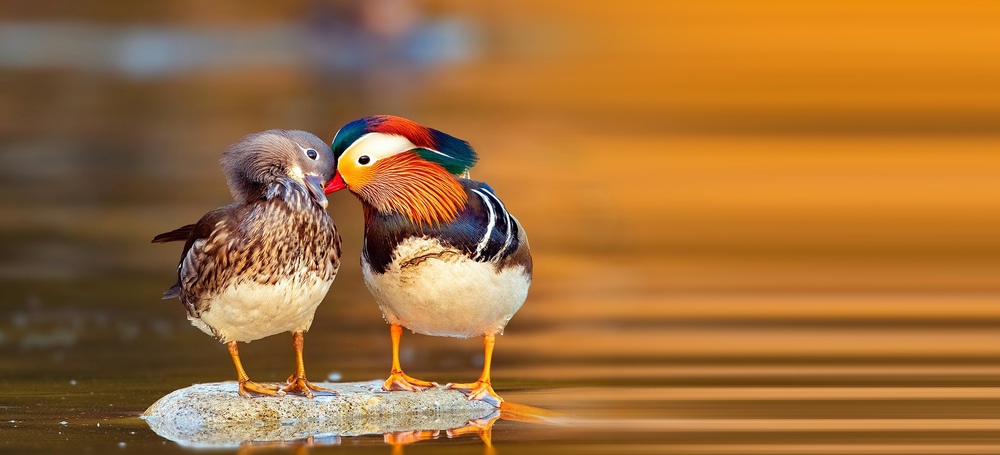
Have you ever wondered, what do ducks have under there? The answer may surprise you. We don’t usually think of birds as having a penis, but male ducks do.
An external sex organ allows them to potentially have more successful sperm transfer. However, ducks can become very aggressive during mating season, and if they try to force a female duck to mate with them, their rate of successful sperm transfer is very low.
Unlike how do birds mate in thorough external fertilization, ducks breed through internal fertilization. The strange part is that males have a corkscrew-shaped penis. A female’s vaginal canal is even more intricate. The complexity of the organs ensures that the female chooses who fertilizes her eggs.
Keep reading to learn how.
Duck Reproduction
The act of duck reproduction is an interesting one. Many people are surprised to discover the duck sex is more closely related to human reproduction than that of other birds.
Male Duck Reproductive System
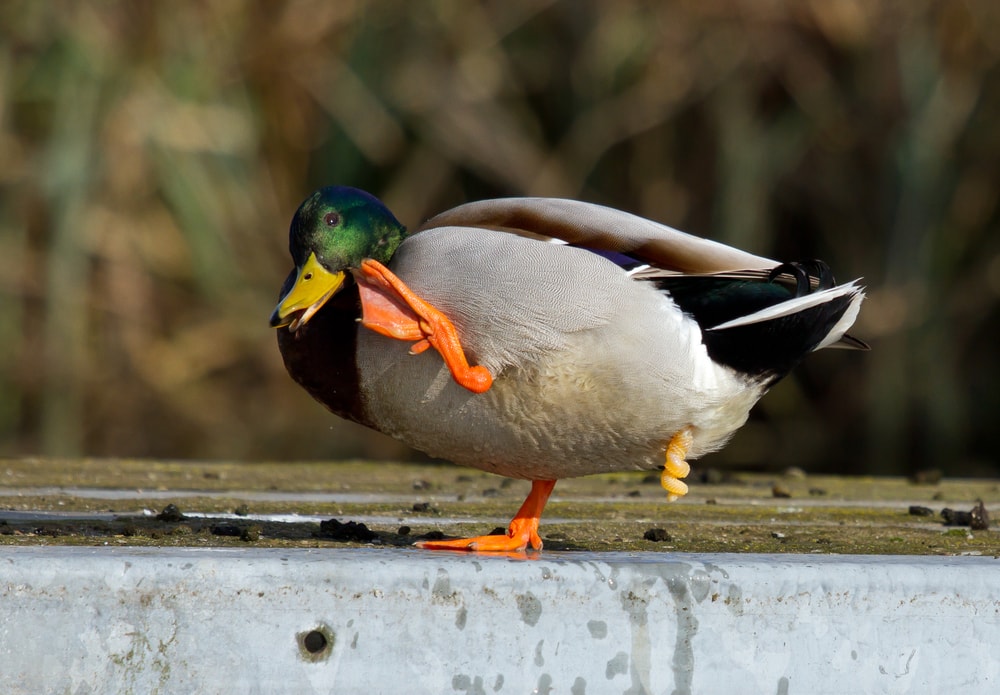
Similarly to many animals, male ducks have testes where they produce sperm. During mating, the testes will become significantly enlarged. When they mate, the sperm moves to the epididymis — a duct located behind the testes that is connected to the vas deferens.
The sperm then moves to the vas deferens — a duct that transfers the sperm to the urethra. From the vas deferens, the sperm makes its way to the cloaca.
Unlike most birds, male ducks do actually have a phallus. Most birds mate by external fertilization, transferring sperm through the rubbing of their cloacas. However, ducks reproduce via internal fertilization by their phallus appendange.
There are advantages to internal fertilization over external fertilization because the transfer of sperm is more likely to be successful. This is likely why ducks have evolved breed through internal fertilization versus external — although it isn’t clear why most birds haven’t evolved to adopt this approach.
What Does A Duck Penis Look Like?
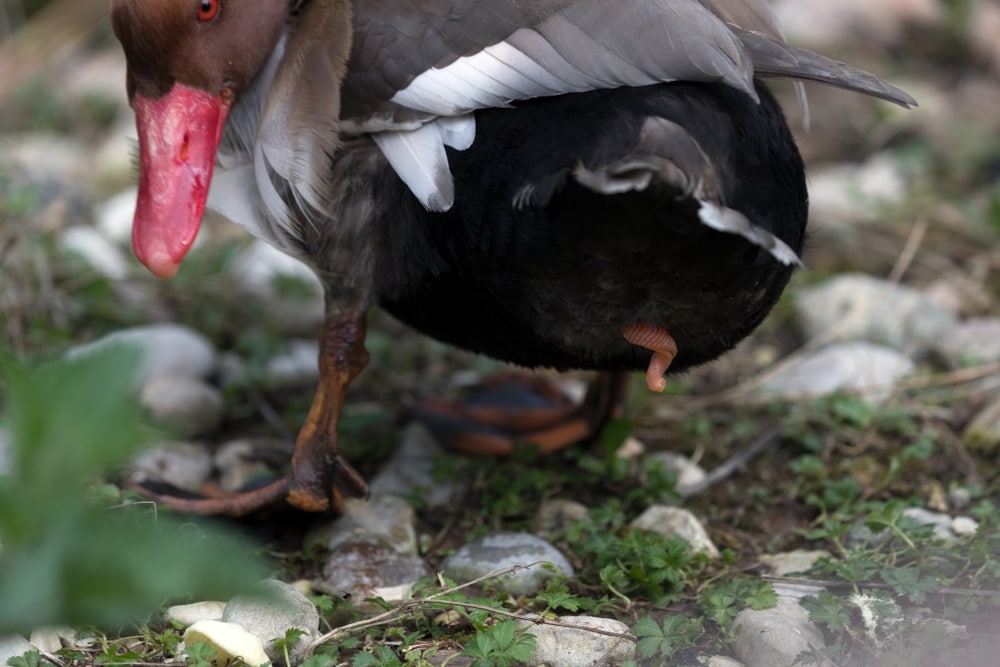
A duck’s penis is a single intermittent organ referred to as a “true penis”. Only certain species of domestic birds have this organ such as chickens, turkeys, and geese, in addition to ducks.
There is a shaft around the duck’s penis, and it is visually unique when it is not erect. When not erect, the penis is coiled along the wall of the cloaca, taking on a corkscrew-type shape.
Researchers believe that when the penis becomes erect, it does so with lymph. The erection is not supported by blood or muscle like in most mammal species. When a duck develops an erection, it causes the phallus to bend forward, moving away from the cloaca.
This all happens quickly because there is nothing to support the duck’s erection, so reproduction can occur in just a fraction of a second.
As the duck becomes aroused, the sperm will travel through the penis along its corkscrew shape. It takes the same amount of time for the sperm to travel through the penis as it does for the penis to extend.
What makes a duck’s penis even weirder is how large it is. Ducks have extraordinarily long phalluses in comparison to their bodies. In fact, some ducks may have a phallus that is as long as 15.7 in (40 cm), and some may be longer than the duck’s body itself.
Female Duck Reproductive System
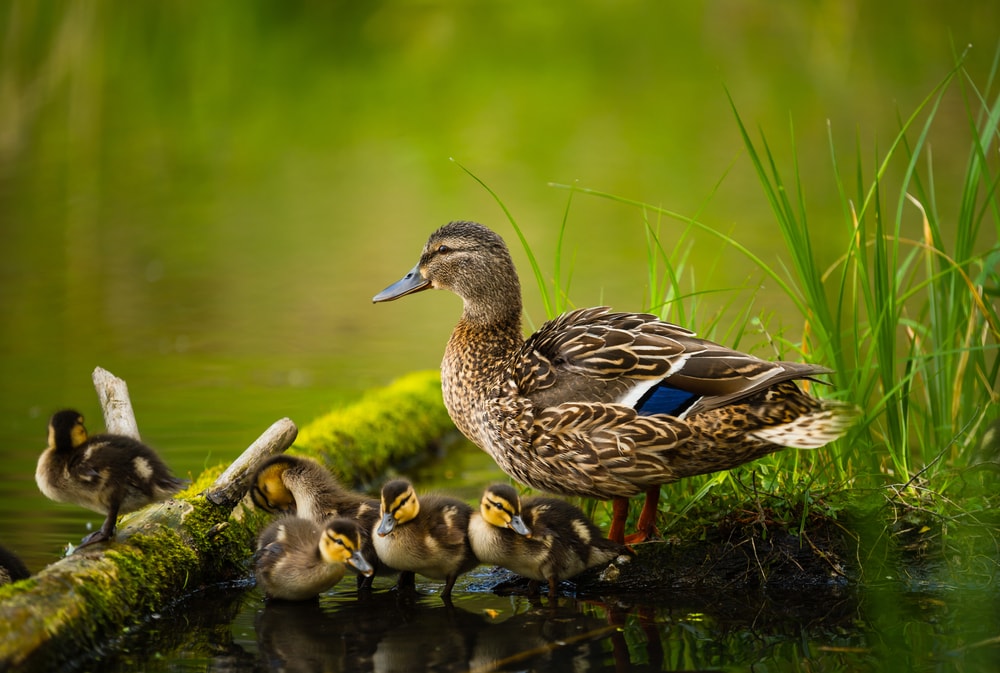
Just as male ducks have a complicated corkscrew-shaped penis, the female’s reproductive system is just as complicated. In most birds, the oviduct is just a simple tube — but most birds breed through external reproduction rather than internal reproduction like ducks do.
The Vaginal Tract
In female ducks, the vaginal canal is not a simple tube. Instead, it twists and winds inside the body. It also has several sacs and crevices added to the mix to make the anatomy even more complicated.
97% of birds do not have phalluses or vaginal tracts. Only 3% of all birds have these organs, making them unique, but the duck takes it a step further. Of the 3% that do have penises and vaginas, ducks are the only ones who have such complicated organs.
Researchers believe that the oddness of ducks’ reproductive systems have evolved due to the common aggression between male and female ducks.
Forced Copulation
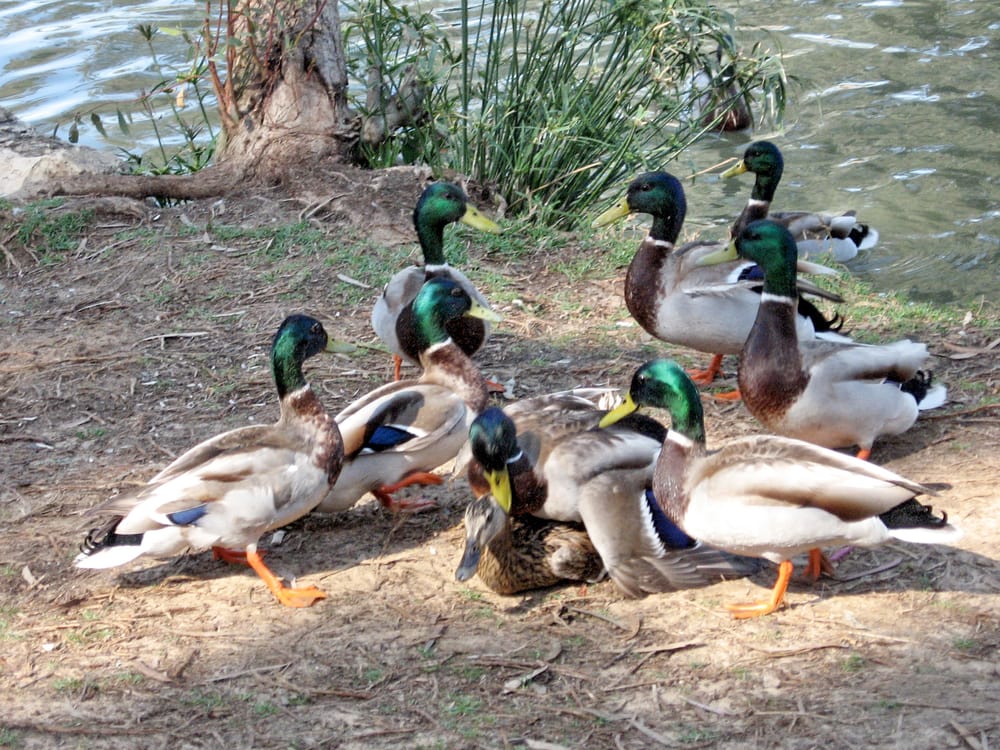
Males who have not found a mate can become so forceful and aggressive that they will form groups of other non-paired males. These large groups will then work together to pursue a female to try and force copulation.
Obviously, this act is very harmful and traumatizing for the female duck. She will frequently end up with injuries, and can even die.
Ducks frequently breed in the water, so many times, a forced female will drown from the exertion of trying to escape.
Forced copulation is not common in bird species besides waterfowl, but it is the likely culprit behind the ducks’ complicated reproductive system. The act of forced penetration is dangerous and traumatizing for the female, so their bodies have evolved to make the assault difficult to accomplish.
A male’s penis is shaped like a corkscrew, while the female’s vaginal tract is shaped like an anti-corkscrew. Because their organs do not fit together easily, it can make breeding very difficult. If the female is an unwilling participant, it simply makes it more difficult for the male to penetrate her if she is struggling to get away.
About one-third of all duck breeding events are forced. Fortunately, the females are not usually forced to lay the eggs of her attacker. She can position her body in a way that prevents the male from fully penetrating her.
Protection Against Aggression
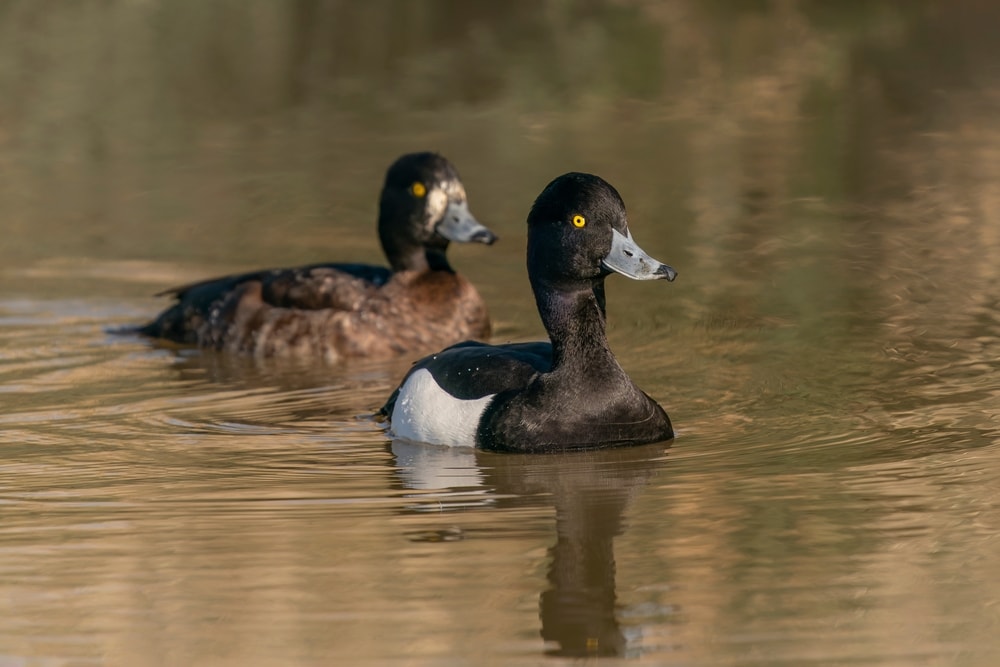
Also, the side pockets and sacs that are inside of the female’s vaginal tract act to trap unwanted sperm. 9 times out of 10, the resulting sperm of forced copulation ends up in one of these sacs. The sperm is then eliminated from the body. As a result, the eggs do not become fertilized.
Besides the protection of the female, difficult copulation adds the advantage of healthier and fitter offspring. Because it is so difficult to penetrate a female duck’s vaginal canal, only the strongest and healthiest ducks with the largest phalluses are successfully able to breed.
Conversely, a male duck that is paired with a female will act to defend his mate from aggressive un-paired ducks. Even if she has a mate, other males will still try to breed with her, so it is the job of her mate to drive off the intruders.
How To Tell Males & Females Apart
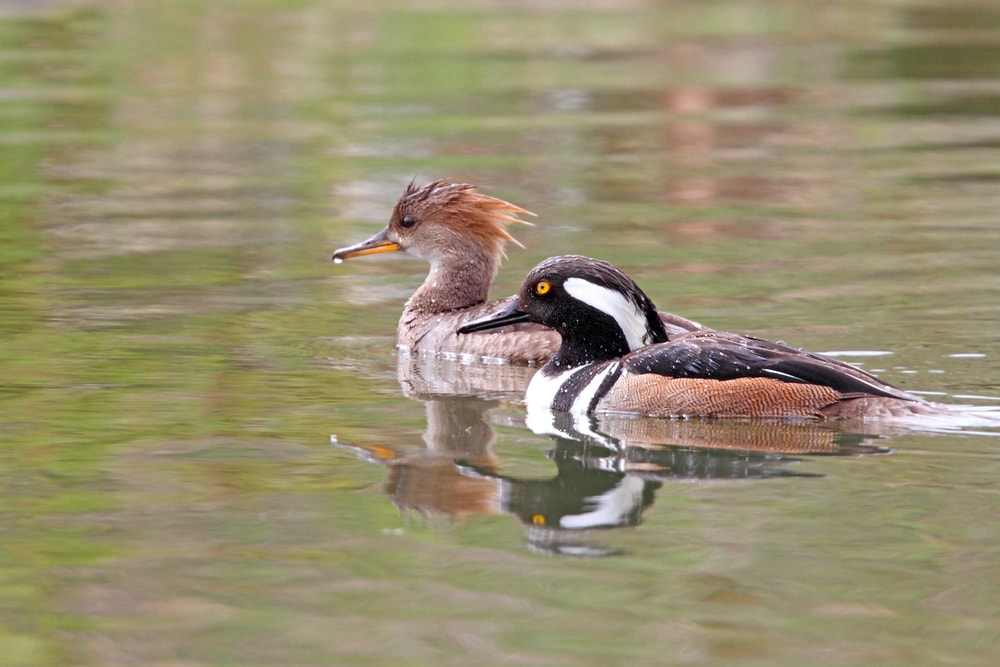
It is not always obvious which ducks are male and female, especially if you’re not all that familiar with waterfowl. Looking at their reproductive organs is not always a good way to differentiate between the sexes because they will generally look the same. A male duck’s penis is usually held within the body, so you’ll only see it when they are in the act of mating.
Most species of ducks are sexually dimorphic, meaning that the males and females will look different in appearance. Just like with most birds, most male ducks are more brightly colored than the females, so this is usually an indication of their sex. In general, male ducks will be larger in body and will have larger heads and necks
However, there are some species of ducks that are not sexually dimorphic, and they can be more difficult to tell apart. When this is the case, you will need to closely inspect their vent — or their reproductive opening — to determine the sex.
Sometimes, you can also tell the sex by the call of the duck. Females and males often sound different, so you can listen for their quack to tell their sex.
How Do Ducks Get “Pregnant”?

Ducks breed through the act of internal fertilization when the male inserts his penis into the female’s oviduct. The sperm is transferred from his testes to her oviduct where it can fertilize the eggs. The eggs become fertilized once the sperm penetrates the eggs.
You may also like: Learn the 30 Amazing Duck Species You Can’t Miss: Complete with Images, Facts, Descriptions, and More!
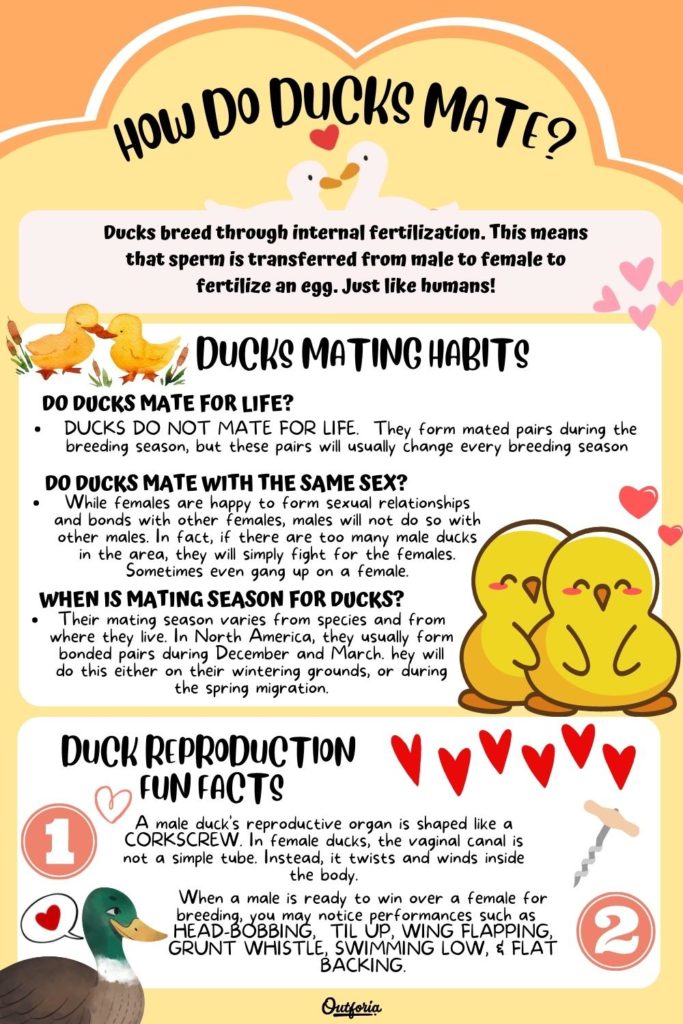
Share This Image on Your Site
<a href="https://outforia.com/how-do-ducks-mate/"><img style="width:100%;" src="https://outforia.com/wp-content/uploads/2022/06/how-do-ducks-mate-infographic-683x1024.jpg"></a><br>How do ducks mate <a href="https://outforia.com">Outforia</a>
You may also like: Are Birds Mammals? The Difference Between Feathers & Fur
Ducks Mating Habits
When Is Mating Season For Ducks?
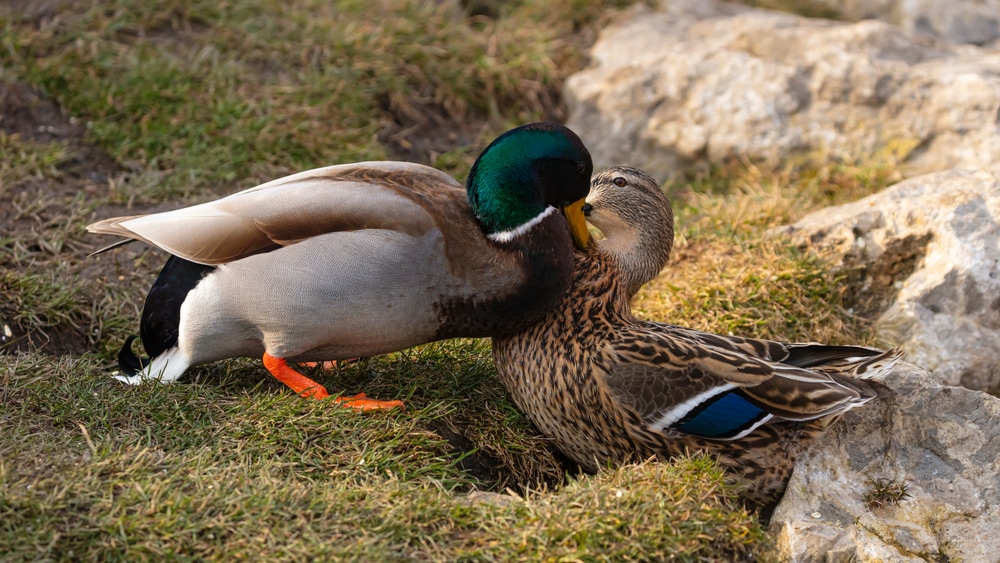
The mating season will vary depending on the species of duck and where on the planet the duck lives. In North America, it is typical for ducks to form bonded pairs between December and March. They will do this either on their wintering grounds, or during the spring migration.
Duck Mating Behavior
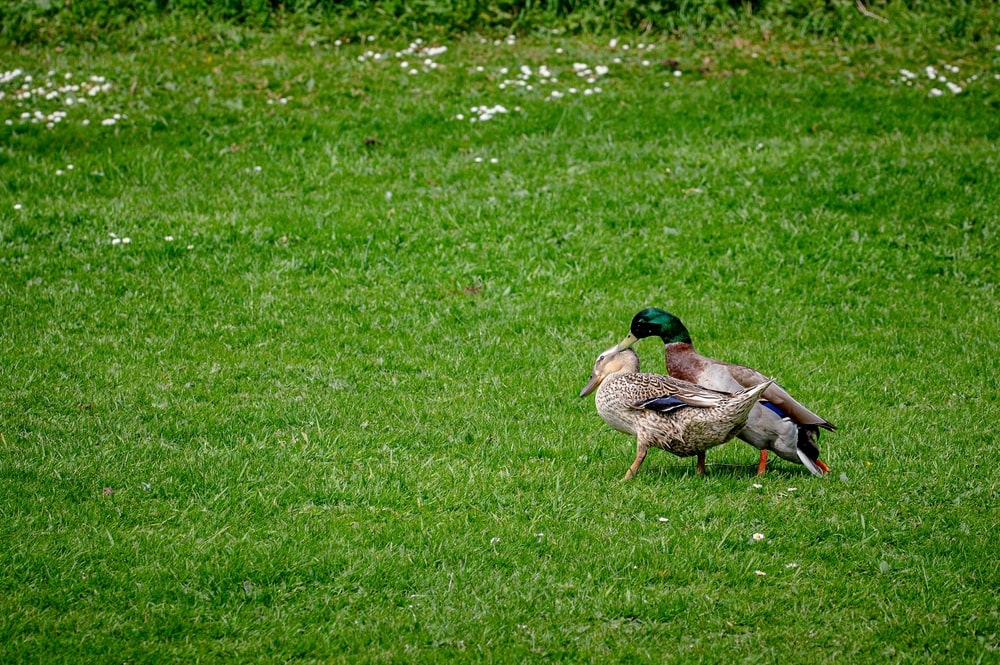
When two ducks are ready to mate, the male will mount the female from behind. He will then line up his penis with her oviduct, before entering and performing copulation.
As I discussed above, the act of copulation in ducks can be quite complicated, but it helps when the female is willing to mate. If she is receptive to the male, she will allow him to mount her and will lift their tail feathers so that the male has better access. She is also able to relax and contract the walls of her oviduct to allow the male easier penetration once inside.
Because a duck’s penis cannot stay erect for long, the act of copulation is incredibly quick. In less than a second, the male’s penis will burst from his body, enter the oviduct, and release the sperm. Just like that, the act is over.
How Ducks Attract a Mate
When a male is ready to win over a female for breeding, you may notice a few different performances.
Head-Bobbing
This movement goes about exactly how it sounds, with the ducks bobbing their heads up and down within close range of other ducks. Both males and females will do this mating ritual, and it is often the first step in duck courtship.
Tail-Up
If mating in the water, the male will tilt his head down toward the water and lift his rear into the air. In doing this, he is able to display his brightly colored secondary feathers that are usually hidden. This is a very effective maneuver used to impress females, often in a group of several males.
Wing-Flapping
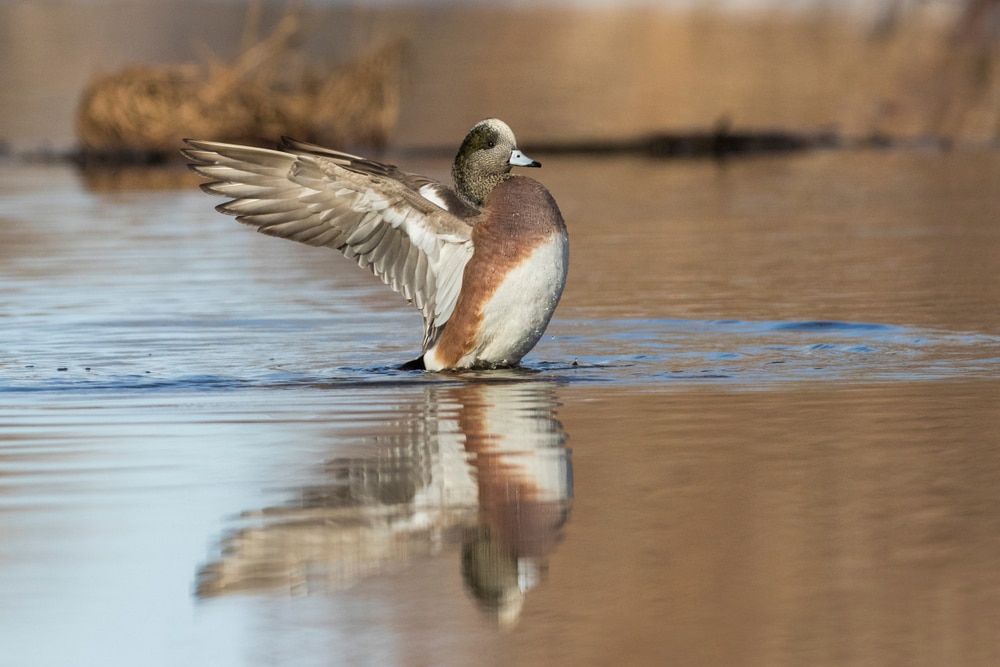
Just as with the “tail-up” method, males are eager to show off their beautiful wing feathers to the females. They will lift their bodies up so that their chests are puffed out, and they will lift their wings to display them.
The Grunt Whistle
Also while in the water, a male may arch his back, pulling his head out of the water and emitting a loud whistle followed by a grunt.
Swimming Low
Another courtship ritual is swimming low in the water with their head and neck just barely touching the surface of the water. Males will do this to attract a female, and will also do it as a kind of happy-dance directly after mating.
Females will perform this maneuver to show a nearby male that she is interested in mating.
Flat-Backing
This mating stance is only performed by females, and it occurs shortly after the head-bobbing dance. A female will elongate her neck and stretch out her back. This is her invitation for a male to mount her.
The male will climb on top of the female and stand on her back. He will then grab the back of the duck’s neck to stabilize himself. The female will move her tail feathers out of the way so that the male has better access, and then the male will penetrate her.
The Sounds Of Success
You will know when copulation has been successful because ducks are very vocal about it. Females often make a more subtle, “urh-urh-urh” sound, but males are much louder. Males will often whistle and grunt loudly during and after the act of mating.
The Importance Of Choosing A Mate
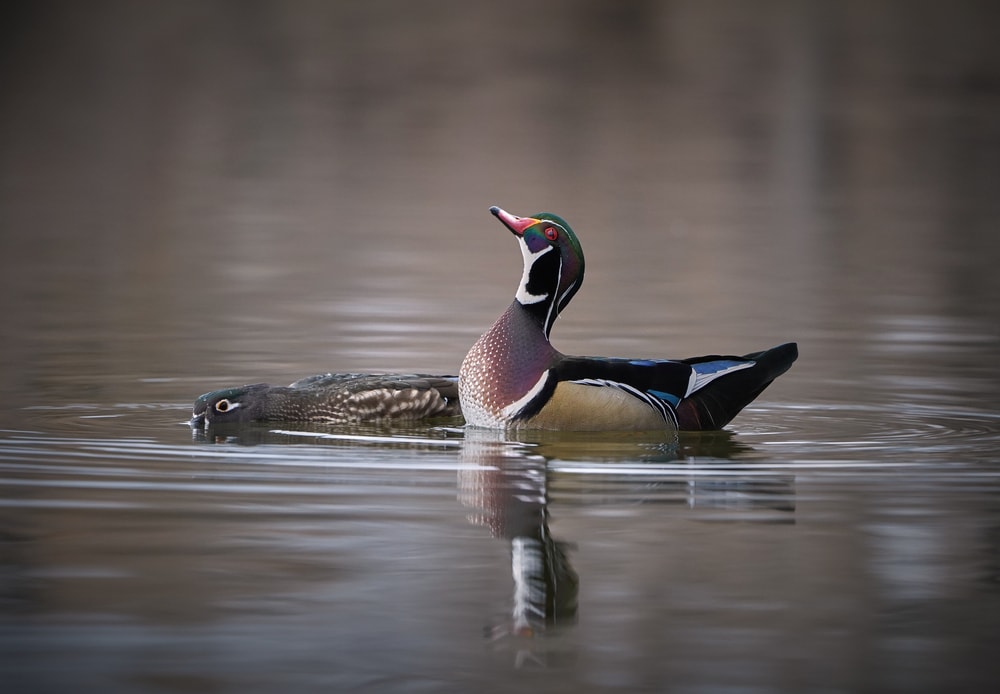
Charles Darwin once wrote “The Descent of Man”, where he claimed that animals and birds choose their mates based significantly on their looks. He called this, “the taste for the beautiful.” He believed that female sexual choice — in every kind of animal — was an important aspect in evolution.
Ornithologist, Richard O. Prum wrote a book called, “The Evolution of Beauty: How Darwin’s Forgotten Theory of Mate Choice Shapes the Animal World — and Us.”
In short, the idea that the female should have a choice in her sexual partner was not a very popular one when Darwin first suggested it. Therefore, the theory has gone largely unstudied.
In his book, Prum strives to explain how Darwin’s theory can be utilized today with our more modern understanding of science. He explains further how female ducks have evolved to avoid rape and why simply being a strong alpha male doesn’t always get you your mate.
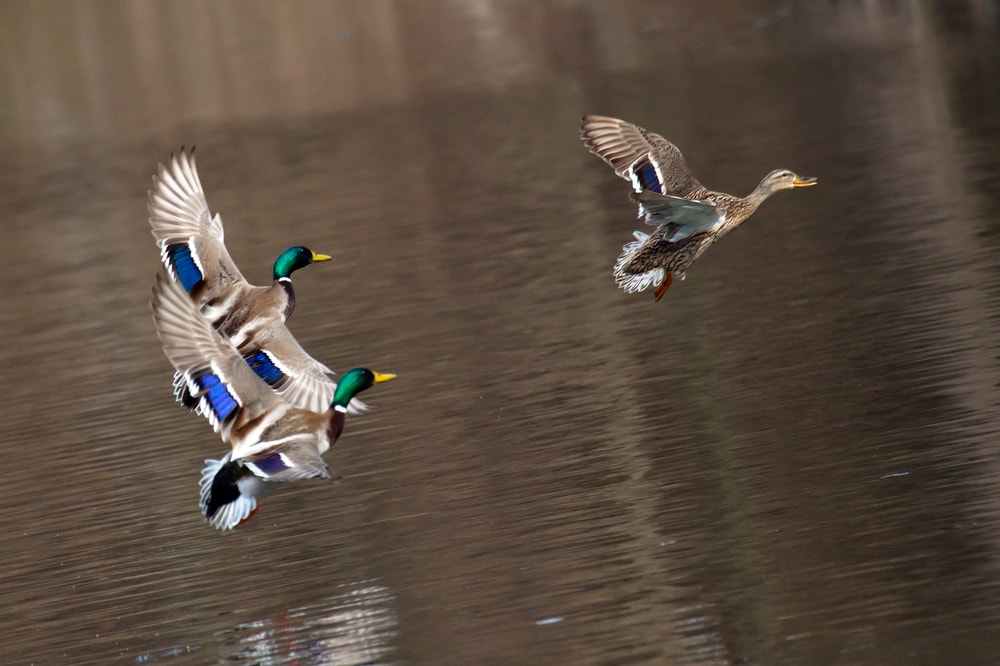
In most bird species, the female chooses the mate. There are two forms of competition: the males must compete amongst themselves to prove they are the best, and then they must also be chosen by a female.
97% of all birds do not have a vaginal canal or penis, so this makes forced copulation all but impossible. In ducks, the female’s choice of mate can be taken away by frustrated and aggressive males.
However, because of the complexity of her vaginal canal, she is able to prevent unwanted fertilization in most cases. This allows the female to still have the final say over who fertilizes her eggs and who will be passing on their genes to her offspring.
How The Seasons Affect Ducks’ Mating Behavior
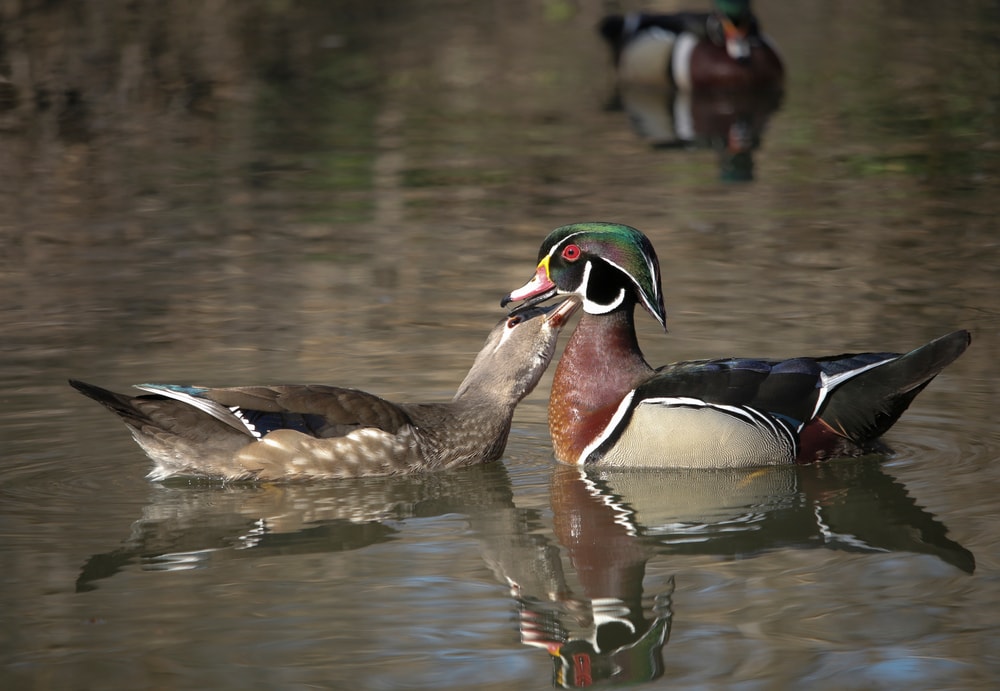
Ducks do not have sexual urges all year-round, so they will not try to mate all year-round. When they want to mate depends largely on their hormones and what time of the year it is.
You can even tell from the color of their feathers what state of the sexual cycle they’re in. As mating season draws closer, ducks — especially males — will molt to develop more vibrantly colored feathers in preparation of wooing the females.
Do Ducks Mate For Life?
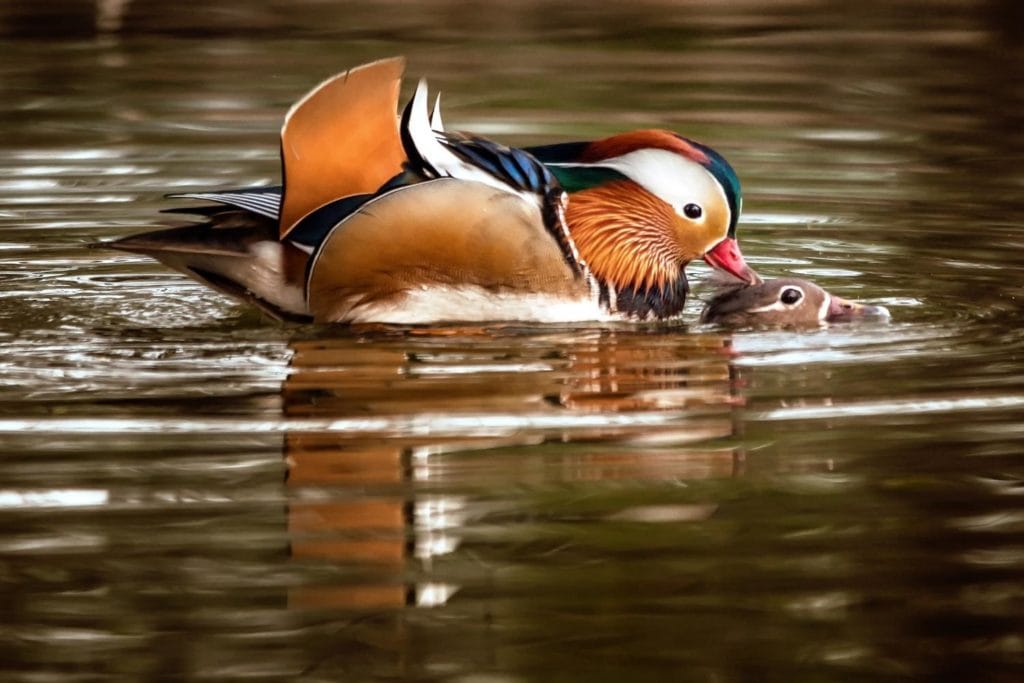
Unlike geese and swans who commonly mate for life, ducks do not. However, many are monogamous during the breeding season. Ducks will form mated pairs during the breeding season, but these pairs will usually change with each subsequent breeding season. This is referred to as “seasonal bond”, or “seasonal monogamy”.
About half of all duck species participate in seasonal monogamy, while other species may be more polyamorous.
Will Ducks Mate With The Same Sex?
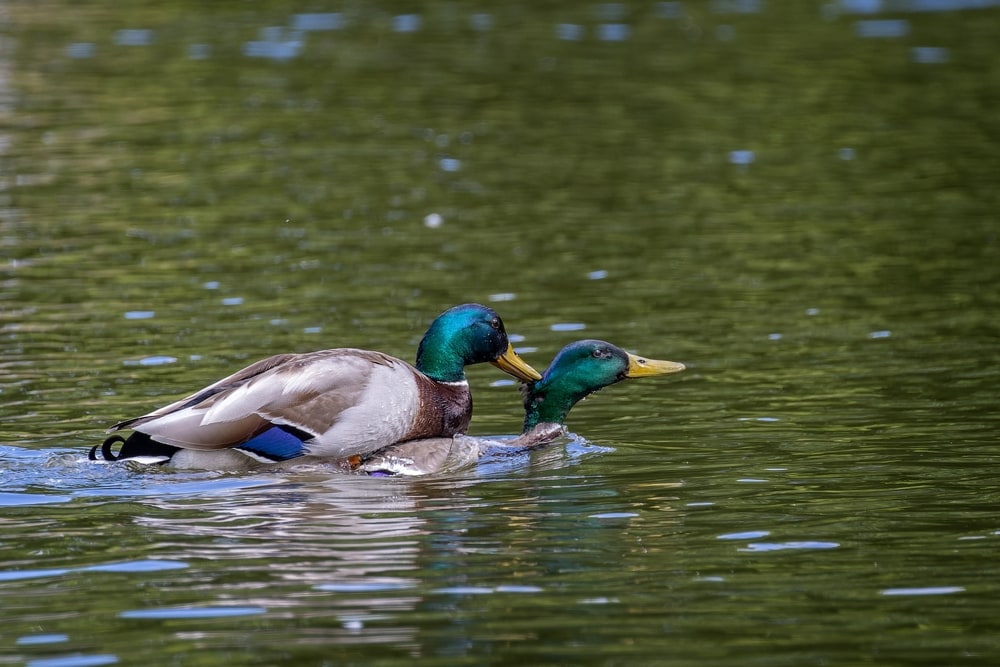
It is not uncommon for ducks to form relationships with other ducks of the same sex. For example, female ducks will frequently from strong sexual bonds with other female ducks. Of course, these encounters don’t result in any fertilized eggs, though.
Some female-female pairs will even form long-term bonds with one another and will go into mourning if their partner dies.
However, this is not the case with male ducks. While females are happy to form sexual relationships and bonds with other females, males will not do so with other males. In fact, if there are too many male ducks in the area, they will simply fight with each because they are competing with each other for access to the females.
How Do Ducks Mate In Water?
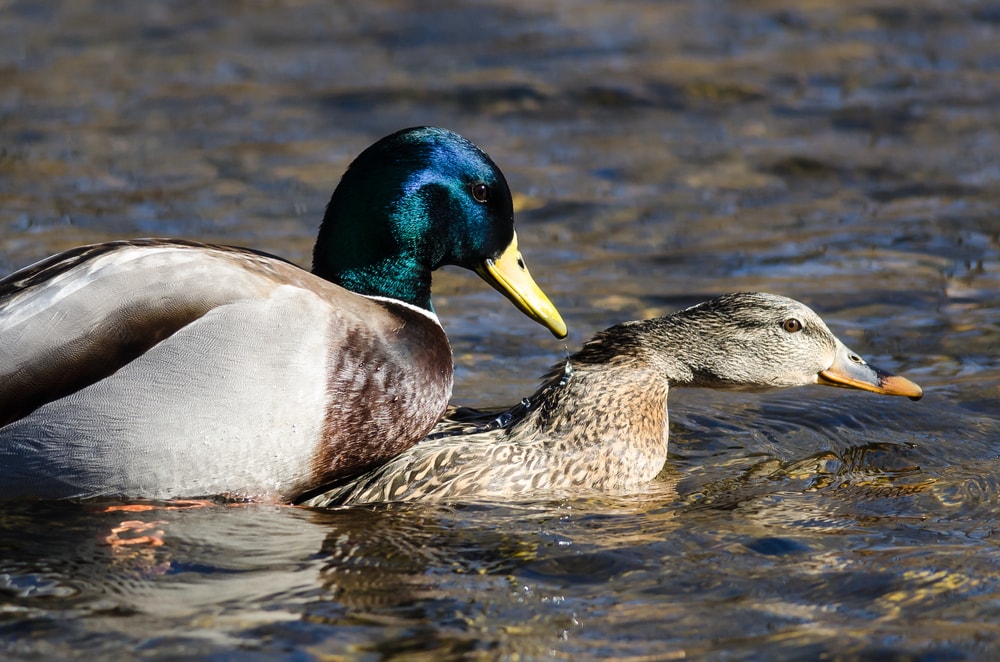
Many times, ducks will mate while in the water because it can be safer than doing it on land. Ducks must stand on the back of another duck to mate, which can be dangerous if the duck on top loses its balance. Often, the duck on the bottom may sustain a leg injury trying to hold both her body weight and that of her partner.
Simply stated, it’s safer and easier for the female to mate in water because she is better able to withstand the weight of the male. However, this only holds true if the act of copulation is willing and mutual.
When a male forces himself on a female, water breeding can actually be quite dangerous. Males will grab the neck of the female and force her head under the water in a show of dominance. When the female is willing, copulation only takes seconds, so this display doesn’t end tragically.
However, when the female does not want to mate, she will struggle and try to get away. There are many times where the female is not able to escape, and ends up drowning as a result.
You may also like: Learn the 40 Fascinating Types of Birds Around the Globe and Where You Can Spot Them: With Images, Facts, Descriptions and More!
Duck Egg Facts
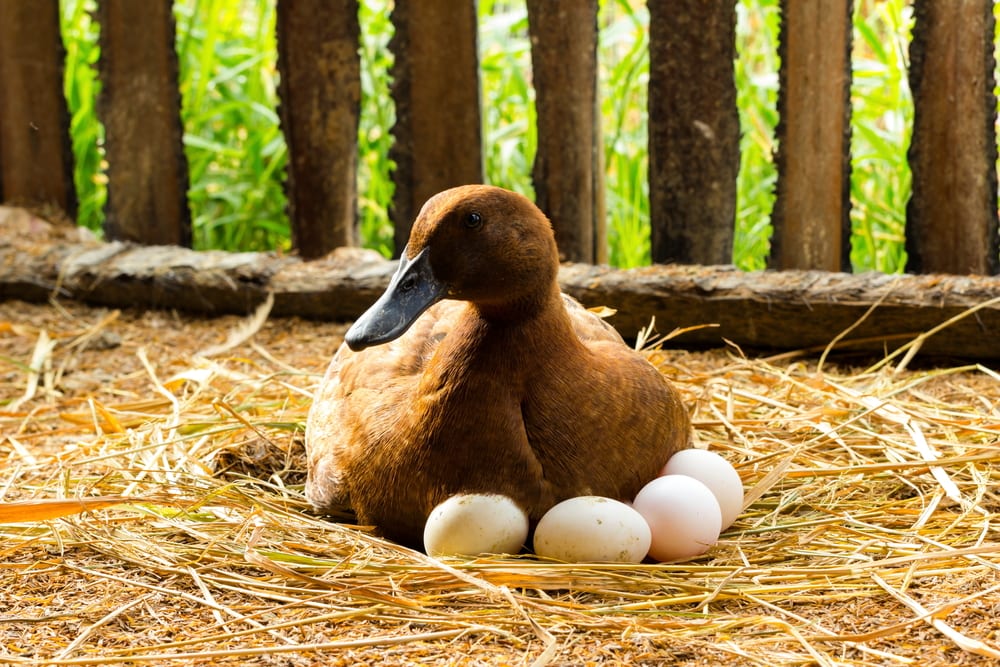
When the pair chooses a nesting site, the female will begin gathering material for her nest and putting it together. She may sit on the nest during this time, but she won’t begin incubating her eggs until after they have all been laid.
Ducks will not lay all of their eggs at once, and it can take days for all the eggs to be produced. She will lay only one egg per day, so depending on the amount of eggs she produces, it can take about two weeks for her to finish laying all of her eggs. Then, she will begin to incubate them.
How many eggs a duck lays depends on her species. As an example, mallard ducks will generally lay an average of 12 eggs. Still, it is expected that only about two of the hatchlings will survive to become adults. This sad fact is expected, though, and the high juvenile mortality rate is why ducks have evolved to lay significantly more eggs than will survive.
A mother duck also does not need to eat while she is laying on her eggs. Before laying eggs, the mother will eat a large amount of food so that her body will be prepared for the incubation process.
Like chickens, ducks can lay eggs that are unfertilized, and many people eat them just as they eat chicken eggs. Many times, the mother does not realize the eggs are unfertilized, so she will continue to lay on the eggs in the hopes that they will hatch one day.
If you’re wondering if your duck is about to start laying eggs, there is an easy way to tell. You simply need to lift her up and gently feel her pelvic bones. A duck that is about to lay eggs will have pelvic bones that are spread further apart than they usually are. The bones become more flexible during this time to make the process easier on the female’s body.
You may also like: Learn the 15 Different Species of Long Necked Birds: With Images, Facts, Descriptions, and More!
Duck Mating FAQs
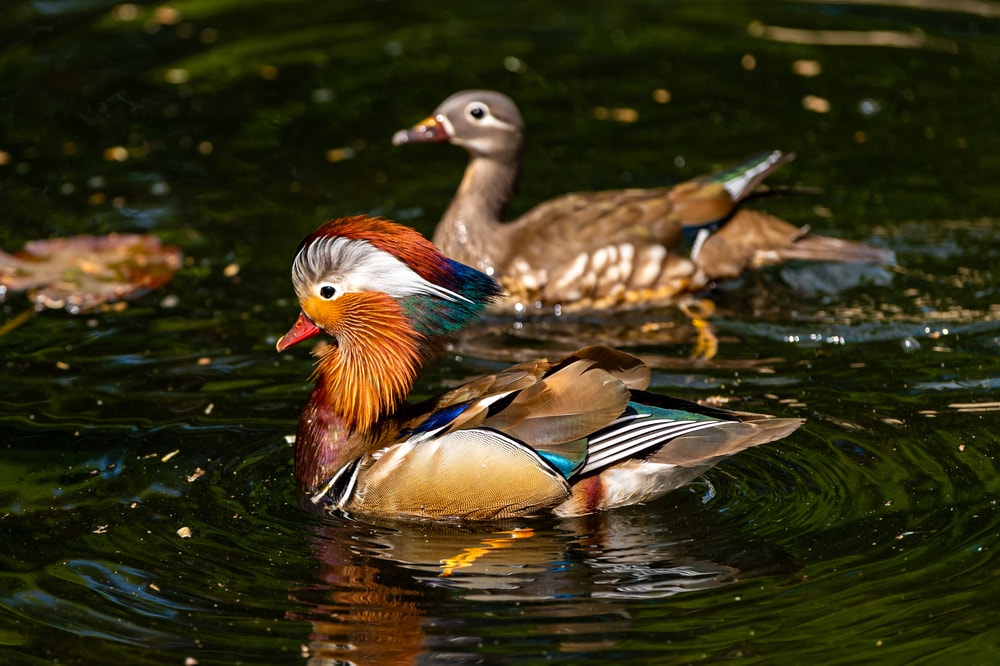
What Time Of Year Do Ducks Mate?
When do ducks mate and lay eggs? What time of year a duck mates depends on what species of duck it is and what part of the world it lives in.
However, many duck populations mate over the winter season, often between the months of December and March. Many other populations will wait until the spring migration to begin mating.
What Does “Duck” Mean Sexually?
In some cultures, the word “duck” simply refers to a happily married couple. In other cultures, people may refer to the act of making love as, “mandarin ducks playing in the water.”
Can A Duck Get A Chicken “Pregnant”?
Oddly enough, a duck and chicken can mate and produce offspring. This odd occurrence is very rare, but it is possible. Most of the time, the eggs won’t even survive past the embryo stage. If the eggs do survive to hatch, the offspring are usually sterile.
However, this phenomenon only works when a male duck and female chicken mate. It is impossible for a male chicken to mate with a female duck.








